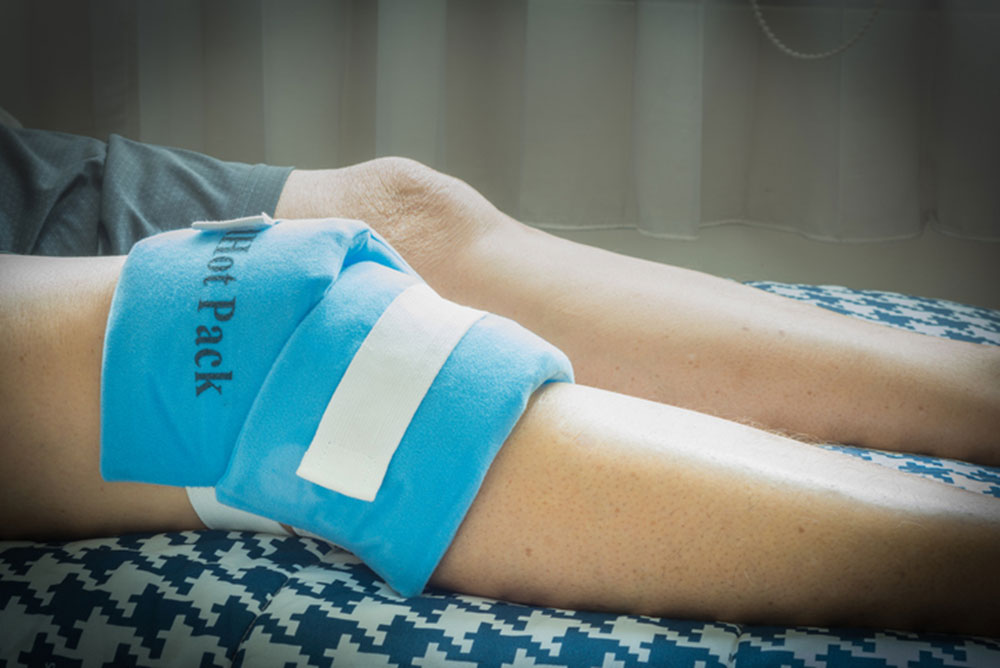
iStock
HOT OR cold? The debate continues about which temperature works better—outside and inside the body. It’s all about the circulation of the blood—how to get it to the right place at the right time.
Cryotherapy, which uses cold packs to reduce swelling and discomfort for both injuries and chronic pain, has been standard practice for decades. The idea is that constricting blood vessels prevents inflammation-causing cells from reaching the problem areas. Now “whole body cryotherapy,” which originated in Japan 50 years ago, is catching on across the country, most notably in warm-weather states.
Once in favor of cold treatment, however, sports medicine and pediatric specialist Gabe Merkin, who in the 1970s coined the acronym RICE (Rest, Ice, Compression, Elevation) for treating injury, recently reversed his advice. He now prescribes heat to make the best “use of your immunity.”
Based on a summary of 22 research studies, Merkin concluded that in the process of preventing swelling, ice “shuts off the blood flow that brings in the healing cells of inflammation” crucial to recovery. Delaying inflammation can “cause the tissue to die from decreased blood flow and even cause permanent nerve damage.”
Heat, on the other hand, dilates blood vessels to increase the flow of healing cells, as well as oxygen and nutrients, to the muscles. Warming also helps relax muscles and lubricate joints, and can relieve muscle and joint stiffness —especially important before activity and especially for anyone with degenerating cartilage due to injury or osteoarthritis.
For those who prefer the cold approach, area locations, such as Capitol Cryo, offer $60 cryotherapy sessions lasting around two minutes in a “cryosauna.” In a narrow metal cylinder enclosing the entire body except for the head, liquid nitrogen cools the surrounding air to temperatures as low as minus 200 degrees Fahrenheit. (Cryotherapy is not recommended for anyone with Raynaud’s syndrome, fever, urinary tract disease, open wounds, high blood pressure and heart disease.)
Although the absence of any moisture or air current keeps the cold from being intolerable or dangerous, skin temperatures can drop to around 55 degrees Fahrenheit. When extreme cold forces blood away from the extremities and toward the core to protect vital organs, that blood collects increased oxygen and nutrients and then streams back to the extremities where it flushes out toxins and boosts circulation, according to promoters.
Many opt for cryotherapy to promote healing after injuries or surgery, or to relieve chronic pain and inflammation-related skin conditions. Others seek the “rejuvenation” touted to result from a flood of endorphins that can numb pain and improve mood, as well as from an uptick in the body’s metabolic rate that raises energy levels.
Poor circulation of blood can be a reason why some people always feel cold. One cause is anemia (too few healthy red blood cells to carry oxygen throughout the body), which can be alleviated by changes in diet or with supplements, notably vitamin B12. Another is Raynaud’s syndrome, when blood vessels in the hands and feet overreact to temperature or stress by narrowing, which limits blood flow to the extremities and causes discoloration, pain and more dangerous risks.
As for the debate on what temperature your beverage should be, practitioners of Chinese and Ayurvedic medicine advise against cold drinks, saying these cause muscles to contract. Especially before meals—starting first thing in the morning—warm drinks are thought to aid digestion. In contrast, cold liquid imbibed during or immediately after meals causes energy to be diverted toward increasing body temperature, thus interfering with digestion.
Warm drinks can increase blood circulation to relieve pain and protect internal organs. Even when the body is overheated from exercise and in hot weather, heated drinks help increase the evaporation of sweat, a process that cools the body and “more than compensates” for any heat added to the body from the drink, according to Canadian researcher Ollie Jay.
Tea, in particular, is best imbibed hot, as soon as possible after brewing to get the greatest benefit from antioxidants—credited with linking green tea to lower risk of colon cancer—which dissipate quickly from a beverage left cooling in an open container.
But even for otherwise-healthy teas, drinks hotter than 149 degrees Fahrenheit, such as an “extra hot” request at Starbuck’s, have been linked to increased risk of esophageal cancer. In a recent study, drinking hot tea was associated with a five-times higher risk of esophageal cancer, though only in those who also smoked cigarettes and consumed at least one alcoholic drink/day.
So, what to do? Outside the body, combining hot and cold is a common strategy: apply a cold pack (or bag of frozen peas), alternating with a heating pad or a warm bath (epsom salts can increase the healing effects). For residents of states with a “marijuana card,” marijuana-infused epsom salts may amplify the relief.
Cold drinks are definitely the better bet if the body gets so hot that sweat increases to the point of dripping or when excess clothes prevent perspiration from dissipating. But for most other times, heat is the way to go.
—Mary Carpenter
Mary Carpenter writes about healthy living in this space every Tuesday.

This is really useful. I hate having to ice, happy now to get on a heating pad bandwagon.
I’m glad heat is now a good option, too. I’m not entirely giving up on ice, though.